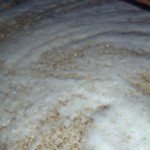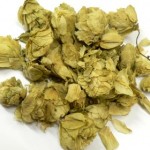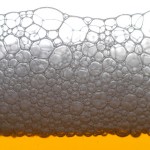Beer Review
I am a beer drinker rather than a connoisseur, but drinking 24 different beers every December in my Advent Beer Calendar has developed my palate and helped me appreciate beers and how they’re brewed.
Everyone has their individual tastes, here’s mine – My favourite beer would be a pint of English Bitter/Pale Ale poured from a tap. I prefer Dutch style Pilsners to German ones, which are too bitter for me. My daily beer of choice is VB. I dislike the taste of Fourex Bitter which I put down to the use of Golden Cluster Hops.
THE 4 MAIN INGREDIENTS OF BEER: MALT, HOPS, YEAST & WATER
I look on Malt as the guts of a beer. Malt is produced by germinating cereal grains by soaking in water, then drying with hot air. This is called “malting”. Malt produces the base flavour and mouthfeel of beer. Different Malts are used to produce each beer style, from Lager, Pale Ale, through Caramel to Dark Chocolate malt, which are descriptions rather than tastes of Caramel or Chocolate, and used in Porters and Stouts.
My 2011 Advent Beer Calendar focused on which hops were used in each beer. Hops are the seed cones of the female flowers of the many varieties of hop plants.They contain an essential oil with a very bitter flavor. This bitterness balances the sweetness of the Malt, it acts as a preservative and contributes to the aroma and high note flavour of the beer.
The Yeast is the catalyst which affects both the Malt and the Hops. It is highly important to the flavour of beer. Yeast turns the sugars into alcohol and at the same time produces up to 600 flavours and aromas. Yeast is the most difficult part of the flavouring process. The flavours it produces are all on the edge of perceptability. Changes in the brewing process, such as temperatures, filtration etc all change the way the yeast will react, which changes the flavours it imparts. Home brewers know well that Yeasty taste which is so difficult to remove. Even Micro Brewerys often produce beer with a faint ‘homebrew’ tang of yeast, but that’s just the obvious Yeast taste, not the subtle but important flavours that Yeast produces.
The three main ingredients of Beer, Malt, Hops and Yeast are joined by a fourth variable – water. Water has a subtle but different taste, depending on location. It’s often said that it is the local water which makes it hard to reproduce a beer in another place. For instance many fans of Guinness say that it tastes differently brewed in Dublin, Ireland, to brewed in the UK or even Australia.
You don’t need to know how an engine works to drive a car and knowing about these brewing basics is not essential to the pleasure of drinking beer, but it has added to my enjoyment. 🙂
The variations of each of the ingredients and the way they are combined and brewed produces an amazing variety of beer for us to drink. With so many factors affecting the brewing process, it’s really amazing that the master brewers guarantee the same taste, year after year.
For me, assuming there is no obvious yeasty taste, the Hops make or break a beer.
While sampling a Japanese Beer, Kirin, I realised that the flavour of the beer was hanging mainly on the taste of hops. I recognised that taste without being connoisseur enough to name it. My guess was Saaz and i was pleased to read on the Kirin website that they buy Saaz from the Cezch Republic, so my guess was correct – I’m learning.
Hops can be divided into two kinds – Aroma Hops and Bitter Hops. Aroma hops are usually added during the finishing/conditioning process, Bitter hops are used during boiling.
The ‘Noble’ hops Hallertau, Tettnanger, Spalt, and Saaz are high in Aroma and low in bitterness, and my favourites, but of course that also depends on the quantity used and when the hops are added to the brewing process.
Here’s a list of hops and their flavours.
What’s your favourite brew?
Share




